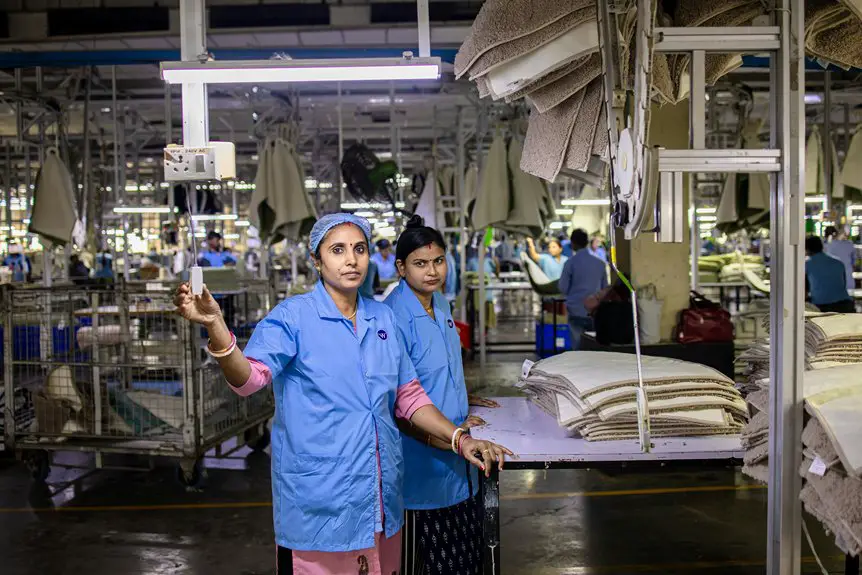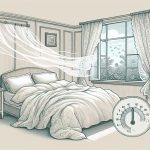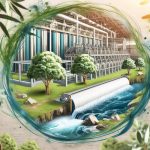When it comes to choosing fabrics that are genuinely biodegradable, it’s essential to understand which materials truly break down naturally and under what conditions. Not all textiles are created equal, and some can take years to decompose due to various factors. Curious about which fabrics make the cut and what helps or hinders their biodegradability? Let’s explore the options and conditions that can make a significant difference.
Table of Contents
Key Takeaways
- Fabrics like Tencel, hemp, linen, organic wool, and organic cotton are genuinely biodegradable under appropriate conditions.
- Biodegradation requires optimal moisture levels, with too dry or too wet conditions hindering the process.
- Warmer temperatures between 20°C to 60°C accelerate the breakdown of biodegradable fabrics.
- Diverse microorganisms, such as bacteria and fungi, are crucial for effective biodegradation.
- Chemical treatments and synthetic fiber blends can impede biodegradability and release harmful substances during decomposition.
Understanding Biodegradability in Fabrics
When you think about fabrics, it’s essential to understand what biodegradability really means. Biodegradability refers to the ability of a material to break down naturally through the action of microorganisms, like bacteria and fungi.
This process transforms the fabric into natural substances, like water, carbon dioxide, and biomass, which can enrich the soil. Not all fabrics biodegrade at the same rate; some might take months, while others could linger for years.
The biodegradation of fabric converts it into natural substances that enrich the soil, but rates of breakdown can vary significantly.
It’s also important to take into account the conditions required for biodegradation, such as temperature, moisture, and the presence of specific microorganisms. By grasping these concepts, you can make more informed decisions about your fabric choices and their environmental impact.
Embracing biodegradable options can lead to a more sustainable future.
Key Biodegradable Fabrics
Several key biodegradable fabrics are making waves in the sustainable fashion industry. You might’ve heard of Tencel, a fiber made from sustainably sourced wood pulp, which breaks down easily in the environment.
Another popular option is hemp, known for its durability and minimal environmental impact. It decomposes quickly and enriches the soil.
Linen, derived from flax plants, is also biodegradable and requires less water than cotton.
Finally, there’s organic wool, which not only biodegrades but also supports animal welfare and sustainable farming practices.
When you choose these fabrics, you’re not just supporting eco-friendly fashion; you’re also reducing waste and making a positive impact on the planet.
Consider these options for your next wardrobe refresh!
The Role of Organic Cotton
Although many fabrics promise sustainability, organic cotton stands out as a versatile and eco-friendly choice in the domain of biodegradable textiles. Grown without harmful pesticides and synthetic fertilizers, organic cotton supports healthier soil and ecosystems.
When you choose organic cotton, you’re opting for a fabric that breaks down naturally, minimizing environmental impact. Its breathable nature makes it comfortable for daily wear, while its durability guarantees longevity.
Plus, organic cotton is often dyed with natural colors, reducing the presence of toxic chemicals in your wardrobe. You’ll find it in everything from clothing to home textiles, allowing you to make sustainable choices throughout your life.
Hemp: A Sustainable Choice
Building on the foundation of organic cotton, hemp emerges as another compelling option in the domain of biodegradable fabrics.
You’ll find that hemp grows quickly and requires minimal pesticides and water, making it an eco-friendly choice. Its strong fibers not only guarantee durability but also break down naturally when disposed of in the right conditions.
When you choose hemp, you’re supporting sustainable farming practices and reducing environmental impact.
Additionally, hemp’s versatility means you can find it in various products, from clothing to accessories.
As you consider biodegradable options, hemp stands out for its low environmental footprint and long-lasting quality.
Embracing hemp can help you make more responsible fashion choices while promoting a healthier planet.
The Benefits of Linen
When you explore biodegradable fabrics, linen deserves your attention for its remarkable benefits.
Made from the flax plant, linen’s cultivation requires less water and fewer pesticides compared to cotton. This makes it an eco-friendly option right from the start.
You’ll love how linen’s breathable nature keeps you cool in hot weather, while its durability guarantees it lasts longer.
Plus, as it ages, linen becomes softer and more comfortable, enhancing your wardrobe over time.
When you’re done with it, linen breaks down naturally, returning to the earth without harsh chemicals.
By choosing linen, you’re not just opting for style; you’re also making a sustainable choice that supports a healthier planet.
It’s a win-win for you and the environment!
Jute: Versatile and Eco-Friendly
Jute, often hailed as the “golden fiber,” is a versatile and eco-friendly option that’s gaining popularity in the world of sustainable textiles.
When you choose jute, you’re not just opting for a beautiful fabric; you’re also supporting the planet.
Here are three reasons why jute stands out:
- Biodegradable: Jute decomposes naturally, enriching the soil as it breaks down.
- Sustainable Production: Jute plants require minimal water and pesticides, making them an environmentally friendly choice.
- Multipurpose Use: From bags to rugs and even clothing, jute’s strength and durability make it ideal for various applications.
Exploring Kapok as a Natural Fiber
While many natural fibers are celebrated for their sustainability, kapok stands out as a unique option that’s gaining attention in eco-conscious markets.
Harvested from the seed pods of the kapok tree, this lightweight fiber isn’t only biodegradable but also resistant to moisture and pests. You’ll appreciate its soft, fluffy texture, making it suitable for various applications, from filling pillows to insulation.
Kapok doesn’t require chemical treatments, which means it’s free from harmful pollutants. Its cultivation supports biodiversity, as kapok trees thrive in diverse ecosystems without the need for fertilizers or pesticides.
Conditions for Effective Biodegradation
Choosing biodegradable fabrics like kapok is just the beginning; understanding the conditions for effective biodegradation is equally significant.
Selecting biodegradable fabrics such as kapok is just the first step; knowing how to ensure proper biodegradation is crucial.
For these materials to break down properly, you need to take into account several key factors:
- Moisture: Adequate moisture levels are vital. Too dry, and the process stalls; too wet, and it can lead to mold.
- Temperature: Warmer temperatures typically accelerate biodegradation. Ideal conditions range from 20°C to 60°C (68°F to 140°F).
- Microorganisms: A diverse population of bacteria and fungi enhances the breakdown process. They’re essential for converting organic materials into simpler compounds.
Challenges to Biodegradability
When considering biodegradable fabrics, you’ll quickly encounter some significant challenges.
Chemical treatments can hinder the breakdown process, while blends of synthetic fibers complicate biodegradability further.
Additionally, the lack of proper infrastructure for composting these materials can leave you questioning their overall effectiveness.
Chemical Treatment Impact
Although biodegradable fabrics promise environmental benefits, chemical treatments often undermine their natural decomposition. These treatments can introduce harmful substances that hinder biodegradability, leading to significant challenges.
Here are three key impacts of chemical treatments on biodegradable fabrics:
- Toxic Residues: Chemicals used in dyeing or finishing processes may leave toxic residues, polluting soil and water during decomposition.
- Altered Microbial Activity: Chemical treatments can disrupt the natural microbial activity needed for biodegradation, slowing down the breakdown process.
- Extended Lifespan: Some treatments enhance durability, making fabrics last longer in landfills instead of breaking down as intended.
To truly benefit the environment, it’s vital to reflect on the impact of these treatments on biodegradable fabrics.
Synthetic Fiber Blends
While biodegradable fabrics aim to reduce environmental impact, the incorporation of synthetic fiber blends poses significant challenges to their biodegradability.
When you combine natural fibers with synthetics like polyester or nylon, you create a fabric that often resists breaking down in natural environments. The synthetic components can hinder microbial activity, making it difficult for even the biodegradable parts to decompose effectively.
Additionally, when these blended fabrics do eventually break down, they can release microplastics into the ecosystem, further harming wildlife and polluting soil and water.
Infrastructure Limitations
Even with the promise of biodegradable fabrics, infrastructure limitations present significant challenges to achieving true biodegradability.
You mightn’t realize that effective composting or waste management systems are essential for these materials to break down properly. Here are three key limitations you should consider:
- Lack of Composting Facilities: Many areas lack the necessary facilities to compost biodegradable fabrics, leaving them to accumulate in landfills.
- Incorrect Disposal: People often toss biodegradable items into general waste, preventing them from reaching the right environment for breakdown.
- Inconsistent Processing Conditions: Biodegradable fabrics require specific conditions—like moisture and temperature—to decompose, which aren’t always met in typical waste management practices.
Addressing these infrastructure issues is crucial for realizing the full potential of biodegradable textiles.
Certifications for Biodegradable Fabrics
When you’re exploring biodegradable fabrics, understanding the various certifications can be vital for making informed choices.
Look for labels like the Global Organic Textile Standard (GOTS) or the OEKO-TEX Standard 100, which guarantee that materials meet specific environmental criteria.
The ASTM D6400 certification is also significant, as it verifies that a product will break down in composting conditions.
Additionally, the European EN 13432 standard focuses on the compostability of packaging and may apply to some fabrics.
By checking these certifications, you can trust that the materials you choose genuinely contribute to sustainability.
Frequently Asked Questions
How Long Does It Take for Biodegradable Fabrics to Decompose?
You’d think biodegradable fabrics would vanish like your last New Year’s resolution, right? Well, they typically take a few months to several years to decompose, depending on conditions like moisture, temperature, and the type of fabric.
Can Biodegradable Fabrics Be Recycled Alongside Conventional Fabrics?
You can’t recycle biodegradable fabrics with conventional ones, as they require different processing methods. Mixing them may contaminate the recycling stream. Always check local guidelines for proper disposal and recycling options to guarantee sustainability.
What Happens to Biodegradable Fabrics in Landfills?
Imagine tossing a sandwich into a landfill—it won’t break down in time. Similarly, biodegradable fabrics struggle in landfills, often taking years to decompose due to lack of moisture and oxygen, unlike in composting conditions.
Are Biodegradable Fabrics Suitable for Outdoor Use?
Biodegradable fabrics can be suitable for outdoor use, but their durability varies. If you choose them, consider factors like weather resistance and moisture exposure. They might degrade faster than traditional fabrics, impacting longevity in harsh conditions.
How Do I Properly Dispose of Biodegradable Fabrics?
Think of biodegradable fabrics as fallen leaves, returning to the earth. To dispose of them properly, compost them or check for local waste programs that accept organic materials, ensuring they decompose naturally and enrich the soil.
- Tetron Fabric for Marine Applications: Durability and Use Cases - June 18, 2025
- Tetron Fabric for Outdoor Furniture: Weather Resistance and Care - June 18, 2025
- Tetron Fabric for Wall Coverings: Style and Application Tips - June 18, 2025







